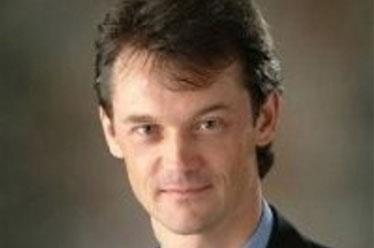Risk management has been central to the success of Europe’s largest infrastructure project, owing much to sustained engagement with lead insurers Swiss Re Corporate Solutions and Zurich and broker AJ Gallagher. Colin Hamling, commercial and insurance manager, (December 2009-2016) tells us more
How did you prepare for a project as complex as Crossrail?
With Crossrail everything was designed well before we went out and procured the contractors. We had many years of planning and time in the civil engineering stage to plan the route and understand the geological implications in detail. The team were working in conjunction with Imperial College and actually knew almost everything there was to know about the substrata in Central London.
The further west we got the more stable the ground was, and the further east the more it fractured. So it was not simply a matter of dropping a tunnel boring machine (TBM) at Paddington and driving it 26km. It’s actually very complex, there are a number of different TBM drives and some of those did require very specific engineering and safeguarding.
How important was the Tunnelling Code of Practice (TCOP) in informing your approach?
The TCOP is a risk management standard which came about after a number of very high-profile tunnel collapses 25 years ago - both in the UK and abroad - which had a big impact on the London insurance market. The TCOP was a last ditch effort to improve tunnelling standards to ensure insurance would be available for these projects. It has various risk management standards that go all the way from the start of design through to the end of the final maintenance, putting various responsibilities on designers, employers and contractors, depending on the stage of the project.
The Code of Practice for Fire Safety was also important. There have been a number of high-profile fires in tunnels - some of them during operation and some during construction. So we had a number of risk management standards which applied from start to finish of the project to reduce the exposure to fire risk. They apply to the contractor and the employer and are very auditable. Once a month we had site visits from the fire safety consultants, and we also worked very closely with both with both the lead insurers’ (Swiss Re and Zurich) own engineers.
Tell me about the tripartite relationship with your insurers and brokers and how that worked…
One of the benefits of leading global insurers is they don’t just offer you a policy for ten years and then sit back. They are very participative. The lead insurers had chartered engineers on their underwriting teams and they were very proactive. It started with the underwriters and a couple of consultants coming in at board level, looking at our attitude to risk and our risk ownership, how it cascaded down and how it was assured. They had some of the best consultants in the business working with them on tunnel boring machines and on sprayed concrete lining, which is very high risk.
How did technology and analytics assist on such a complex project?
We surveyed over 14,000 buildings in the ‘zone of influence’ before we started construction, so we knew very closely what the risks were. In addition, all those buildings had instrumentation on them using a variety of techniques, and they were monitored centrally throughout the project. We knew all the ground movement, as it helped as mitigate the high-risk areas, and it also helped us successfully defend claims where we could prove there was absolutely no movement whatsoever within 100m of a particular building, for instance.
Very early on Crossrail had done all the quantitative risk assessment to back up the qualitative risk assessment. We needed to look at both so we could work out what our risks were, likely frequencies and severities. Although many of the risks were very low frequency, they were potentially very high severity.
There was also a very high level of analysis of ground movement on the TBMs in real-time, and that was fed through to central control areas. Where we were doing underground excavation, for example at the station boxes and cross passages, there was a high level of triangulated instrumentation. And again all the ground movement was monitored and fed back so we could analyse all the predictive ground movements against the actual experience - all in an effort to predict and rectify any potential risk.




















No comments yet